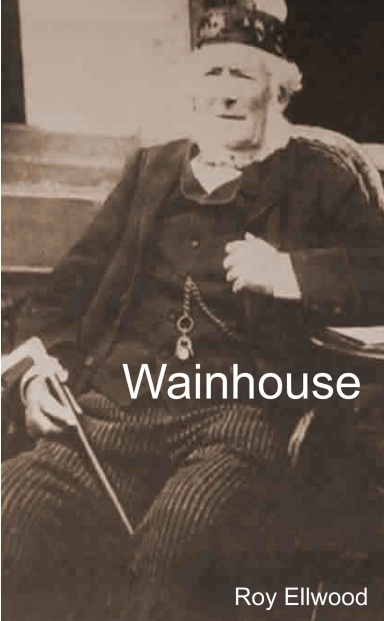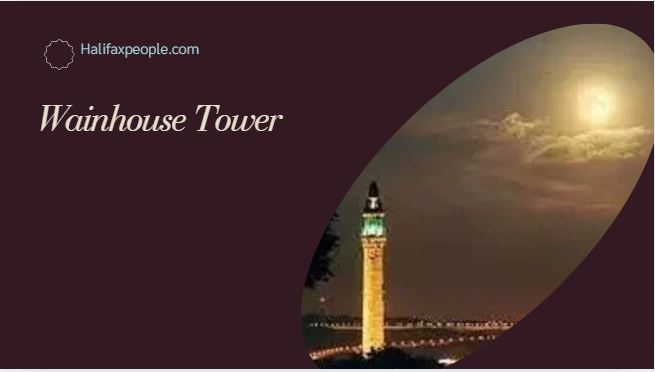
Wainhouse-Tower is a folly in the parish of King Cross, on the south west side of Halifax. At 275 feet (84 m), it is the tallest structure in Calderdale and the tallest folly in the world, and was erected in the four years between 1871 and 1875. The main shaft is octagonal in shape and it has a square base and 403 steps leading to the first of two viewing platforms. The tower is open to the public during bank holidays, and is a Grade II* listed building.
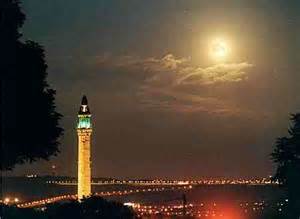
The following is an article by Peter Reeve
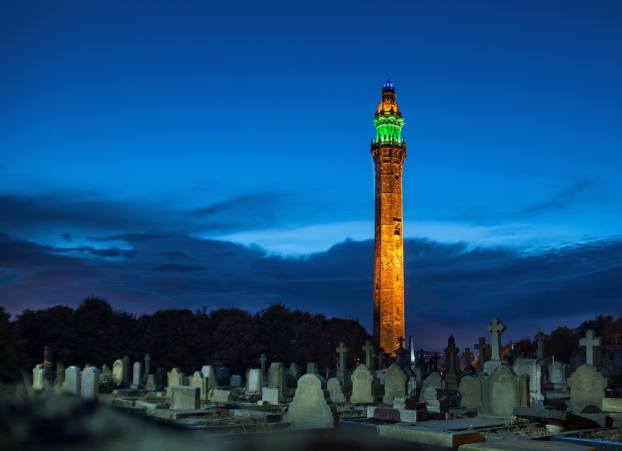
photograph by Christian Wilkinson
Any visitor to Halifax in West Yorkshire cannot fail to notice the Wainhouse Tower – particularly at night when it shines out from the hills at the West end of the town and points directly to ‘the Grand Lodge above’ as illustrated here in this brilliant, rather spooky, photo taken by Christian Wilkinson.
The tower was originally intended to be a chimney for John Edward Wainhouse’s dye-works. However, before construction was finished, he sold the mill but kept the chimney to use as an observatory, adding steps inside it along with viewing galleries and the ornamental top that we see today.
For a few years before this, Wainhouse and Henry Edwards, the owner of the estate which neighboured the dye-works, had been feuding over such issues as water rights, nuisance smoke emissions, nuisance trees, blocked highways and the like. Wainhouse, who was somewhat eccentric, had published pamphlets criticising and lampooning Edwards and the two had faced each other in court several times. At one of these hearings, Wainhouse was asked if he had ever threatened or attempted to knock Henry’s brother’s teeth down his throat. “I have not” was the reply”, but I have no objection to try”!
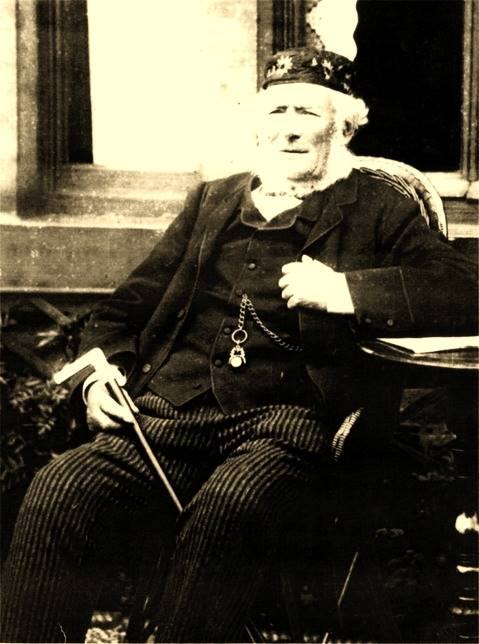
John Edward Wainhouse
Edwards was no shrinking violet either and had boasted that he had the most private estate in Halifax, which no-one could overlook, but after the opening of Wainhouse’s viewing galleries in 1875, he could never make that boast again.
Henry Edwards (later Sir Henry Edwards, 1st Baronet of Pye Nest) was initiated into Freemasonry in the Lodge of Probity No 73 (now No 61) in Halifax in 1847. He was also a joining member of Constitutional Lodge No 371 in Beverley in 1858, a founder member of The Lodge of Sincerity No 1019 in Wakefield in 1864, a joining member of Westminster and Keystone Lodge No 10 in London in 1867 and a joining member of St James’s Lodge No 448 in Halifax in 1876.
He served as the Conservative MP for Halifax from 1847 to 1852 and was elected as the MP for Beverley in 1857 where he served for several terms. During Sir Henry’s tenure, Beverley became known as a notorious ‘rotten borough’ and after the election in 1868, there were allegations of corruption against Sir Henry and the other successful Tory candidate, Edmund Kennard (who was also a member of Westminster and Keystone Lodge No. 10). The famous author, Anthony Trollope, was one of their Liberal rivals at this election.
In 1869, a Government enquiry revealed corruption with at least 900 people (about half the electorate!) having received bribes. The election was pronounced null and void and Beverley was disenfranchised as a parliamentary constituency. It was said at the enquiry that, in Beverley, the price of a vote “was as well-known as the price of butter”.
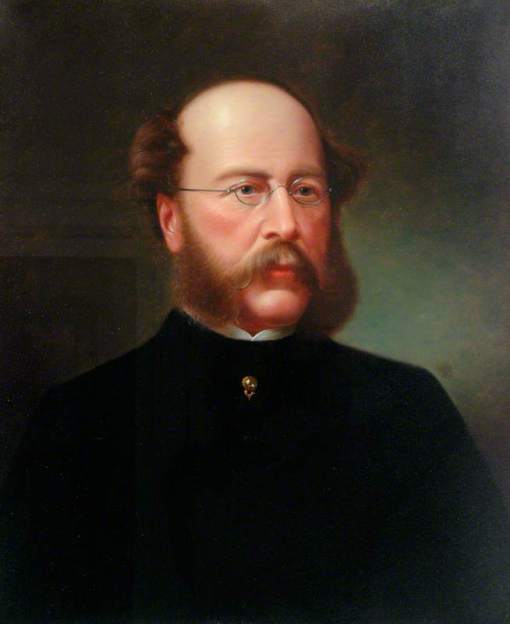
Henry Edwards
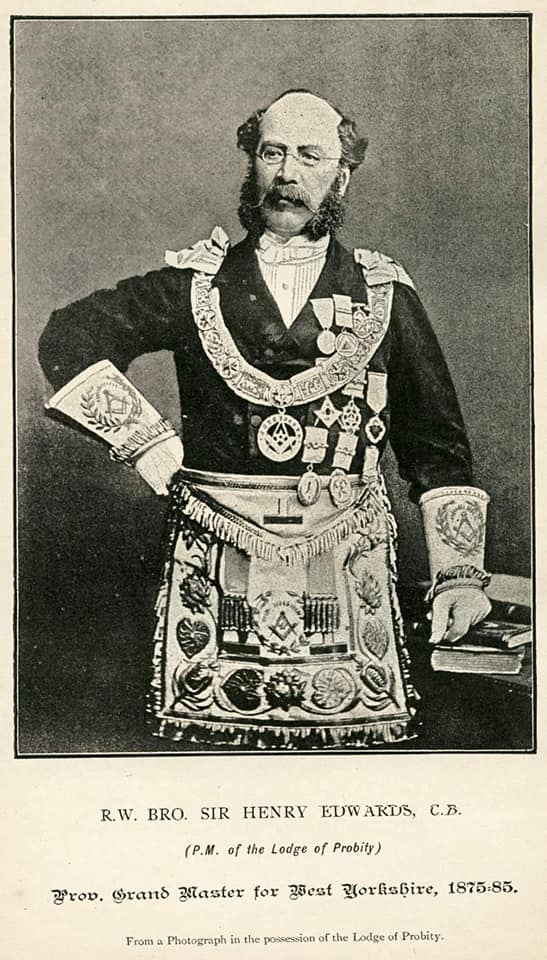
Subsequently, in 1870, Sir Henry was tried for bribery at the Yorkshire Assizes before Mr Justice Brett with the Solicitor-General appearing for the prosecution. At this trial, it was revealed that “a perfect holocaust of correspondence and documents” which had existed at the time of the initial Government enquiry had been destroyed “on the advice of a Conservative Agent”.
Although the Government enquiry had shown that bribery had secured Beverley for the Tories in all the elections since Sir Henry first stood in 1857, and verbal evidence was given at the trial that a Mr Norfolk and a Mr Cronheim, one a business partner and the other an employee of Sir Henry, had delivered some of the funds from which the bribes were paid, Mr Justice Brett – a Tory politician – expressed the opinion that there was insufficient evidence to show that Sir Henry – also a Tory politician – was involved. The Solicitor-General then announced that he did not propose to offer any further evidence (maybe because there was no other evidence that had escaped destruction?). Consequently, Sir Henry was found not guilty and on leaving the court was “loudly cheered by his friends”.
This was not the result of a ‘Masonic conspiracy’ – no Masons were sitting in judgement – but was there an ‘establishment conspiracy’? ……..No comment!
Five years after these events, in 1875 – the same year that Wainhouse Tower was completed to take its place in the history of the town – Sir Henry was installed as the Provincial Grand Master of The Freemasons of West Yorkshire.
Article by Peter Reeve
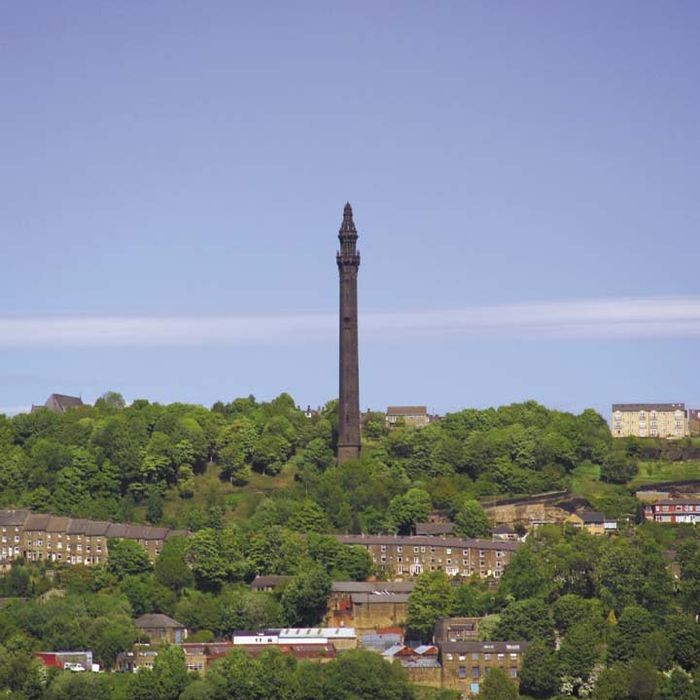
Sir Henry, an extrovert and boastful man, claimed that his private estate at Pye Nest could not be viewed from any house o the hills. Wainhouse said he would rectify this by putting an observatory at the top of his chimney.
Work commenced in 1871. In 1873, as a result of the feuding; the architect Isaac Booth decided he could no longer work for either man. This led to the appointment of Richard Swarbrick Dugdale, who redesigned the upper section of the building. The new design incorporated a corbelled and balustrade balcony, surmounted by a lantern dome and finial.
Buy the book 'Wainhouse' by Roy Ellwood
A story based upon the life story of John Edward Wainhouse of Halifax, West Yorkshire 1816-1883, builder of the landmark ‘Wainhouse Tower’.
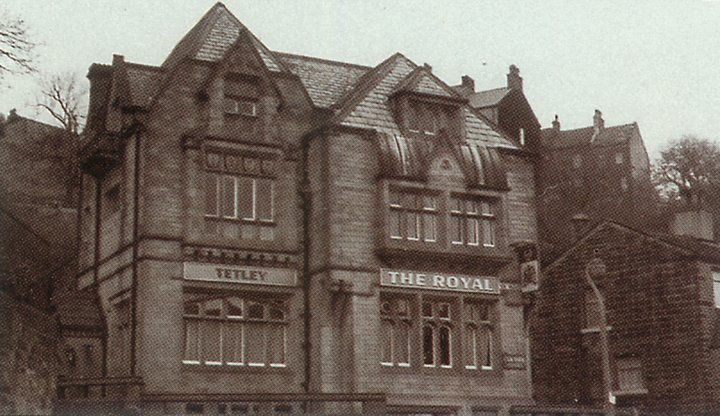 |
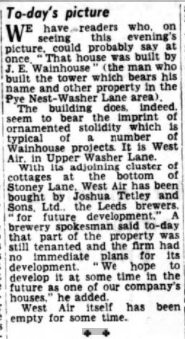 |
The home of JE Wainhouse at West Air was converted into a pub and became known as 'The Royal', 'The Folly' and the 'Wainhouse Tavern'.
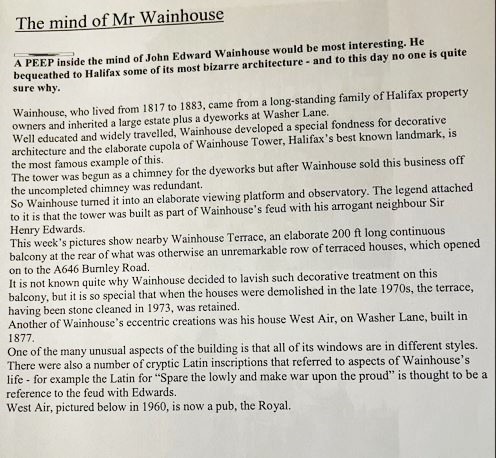
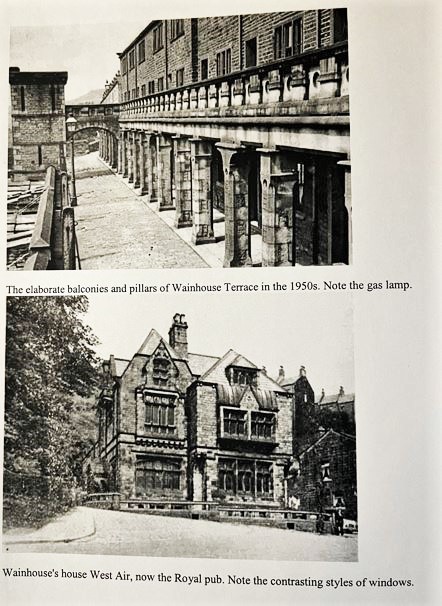
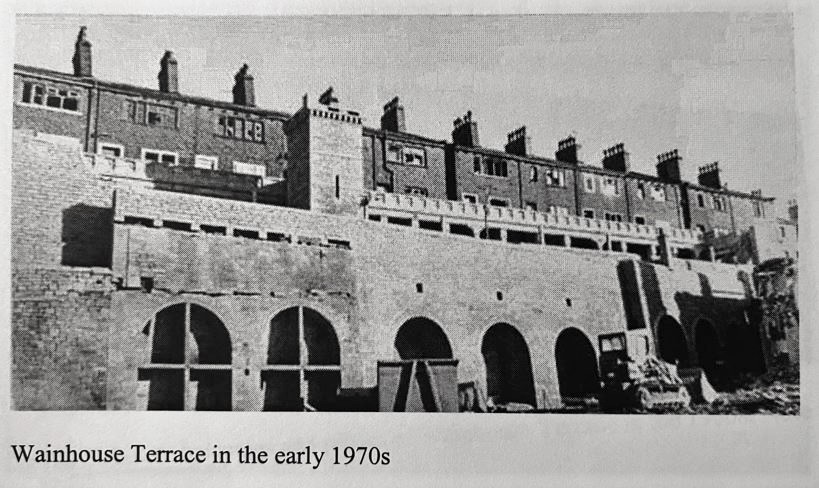

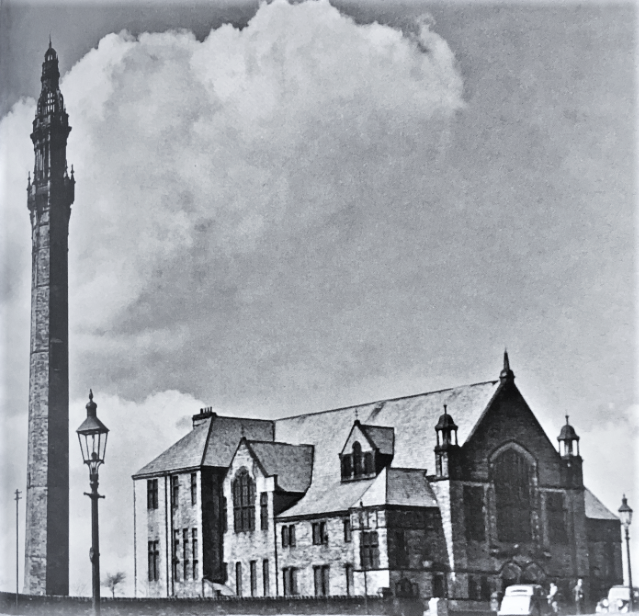
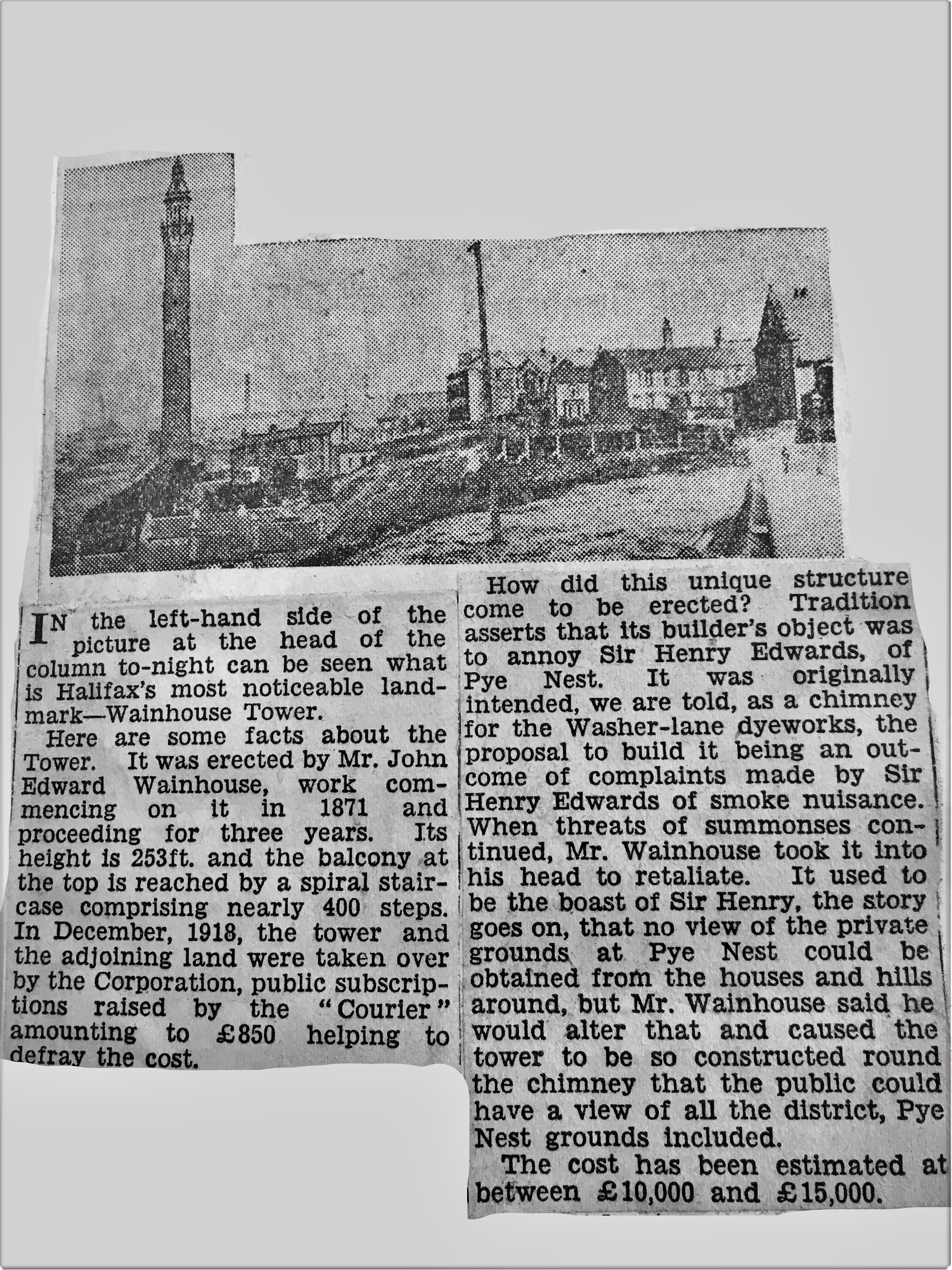
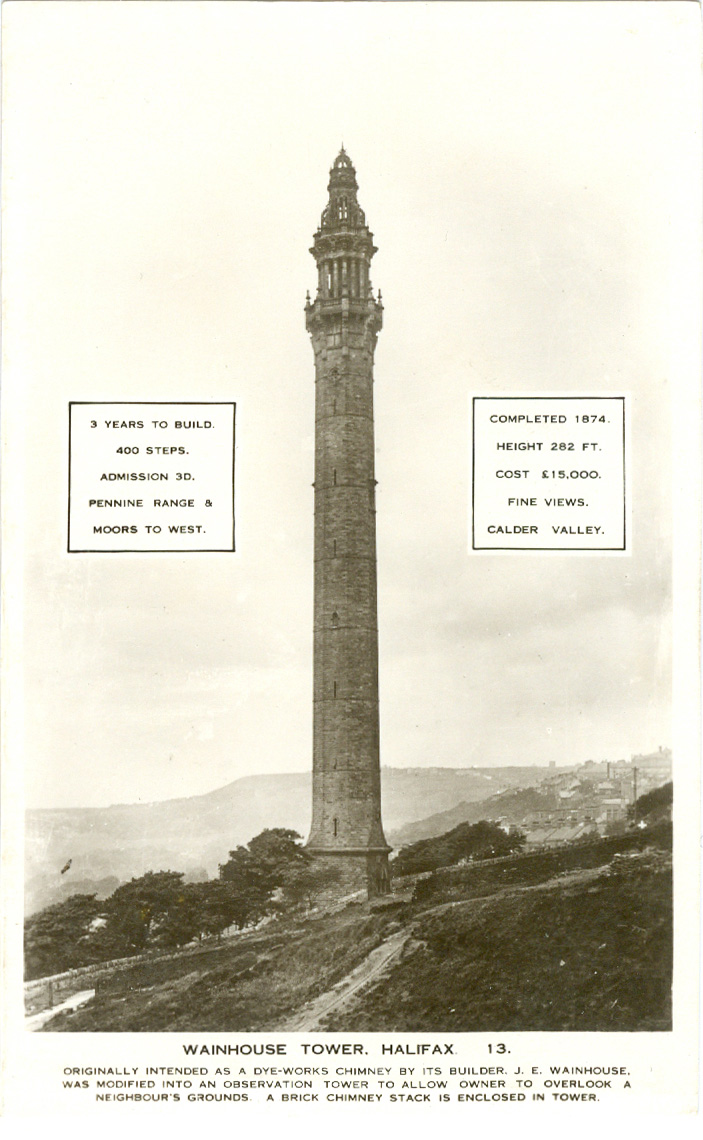
On certain public holidays during the year, The Wainhouse Tower near King Cross is open to the public, who may climb its 400-odd steps, and view a wonderful panorama from its terrace.
In many ways, the history of Wainhouse history is as interesting as the building itself. Its construction began in 1871, and it was the brainchild of John Edward Wainhouse, a prosperous dyer by trade, who lived nearby at West Air, a house which he had also built, and which is currently known as The Wainhouse Tavern. The tower was originally intended as a chimney for Wainhouse’s Washer Lane Dyeworks, in order that a better draught could be attained, so that smoke did not linger in the valley below. This was partly because Sir Henry Edwards of Pye Nest, who owned Canal Mills in the valley, had long complained of a smoke nuisance; also, The Smoke Abatement Act had been passed in 1870. Despite the erection of the chimney, threats of summonses continued to be made by Edwards. For various reasons, the chimney was never used as such, and the sale of Washer Lane Works by Wainhouse in 1873 must have contributed to this.
It had long been the boast of Sir Henry that, when on the lawn at his Pye Nest Mansion, no-one could see into his private grounds. Wainhouse decided to alter all this, and he ensured the Tower would be so constructed, that members of the public could have a good view of the whole district, Pye Nest grounds included. The feud between the two gentlemen became legendary. As a result, the building has been called the tallest folly in the world, or The Tower of Spite. For some years its preferred name was The Octagon Tower.
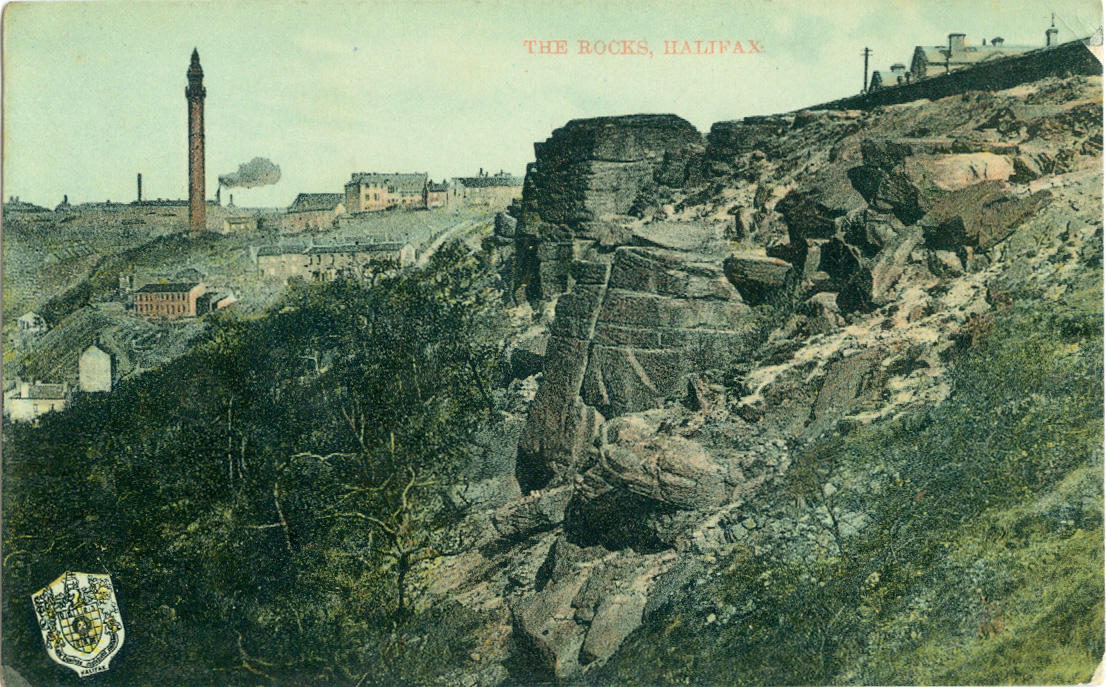
Wainhouse’s first architect was a local man, Isaac Booth of George Street; who is said to have left his post after two years over the feud with Edwards. He was succeeded by Richard Swarbrick Dugdale, later Borough Engineer for Huddersfield. The stone used was from an adjoining quarry, and the work was carried out by Wainhouse’s own workmen. The men were paid by day work, and the project took well over three years to complete; the final stone being put in place in September 1875. It has been estimated that the tower’s final cost was as much as £15,000. The internal flue has a diameter of 7 feet, and this is surrounded by a winding staircase, from the ground up to the balcony.
The full height of the tower is about 253 feet. The internal structure is a brick chimney, surrounded by a stone case over two feet thick; a series of loopholes give light to the circular staircase, which comprises over 400 steps. From the first balcony sixteen pillars support the upper portion, and the whole crown forms a solid and graceful piece of work. The whole building is of excellent design, and delightful to look at. The view from the top is very extensive, stretching as far as Kebroyd in the Ryburn Valley, Langfield Moor near Todmorden, Castle Hill, Huddersfield, and over beyond Blackstone Edge.
Following Wainhouse’s death in 1883, the Tower was sold in 1887 to Charles Barrett, cloth merchant, and William Henry Dodgson Horsfall, architect, both of Halifax. In 1893, they proposed to demolish the structure, but this idea fell through, and nothing more was heard of its demolition. An alternative suggestion that the Tower should be presented to the Borough Council, also came to nothing. Even in those days it was usual for the tower to be open to the public on Bank Holidays. In 1894, George Aked Blackburn of Northgate purchased the tower; but did not find a practical use for it, alth
ough during his ownership early in the 20th Century some experiments were carried out from it with an electric searchlight by Walter Emmott, a great engineer, once dubbed the Father of Electricity in Halifax. Successful wireless telegraph experiments were also carried out from the Tower; and W E Denison, of the Halifax Courier, operated his 2KD radio station there in 1909.
In October 1912, owner Blackburn decided to put the tower on the market. The auction took place at The Boar’s Head in Southgate; but there were no takers. Finally, on 30th May 1919, it was bought by Halifax Corporation for £450, which was raised by a Shilling Subscription Fund.
During World War II, the edifice was used as an ARP observation post.
The local council has tried to keep this wonder of Calderdale in good condition over the years, but in 2007, a structural survey revealed the tower was unsafe, and it was closed. Later that year Calderdale MBC arranged that £350,000 would be spent restoring it, so it could again be opened to the public.
If you have never climbed the Wainhouse Tower, and have a head for heights, and plenty of energy for ascending steps, do take the opportunity to do so soon!
David C Glover – March 2017
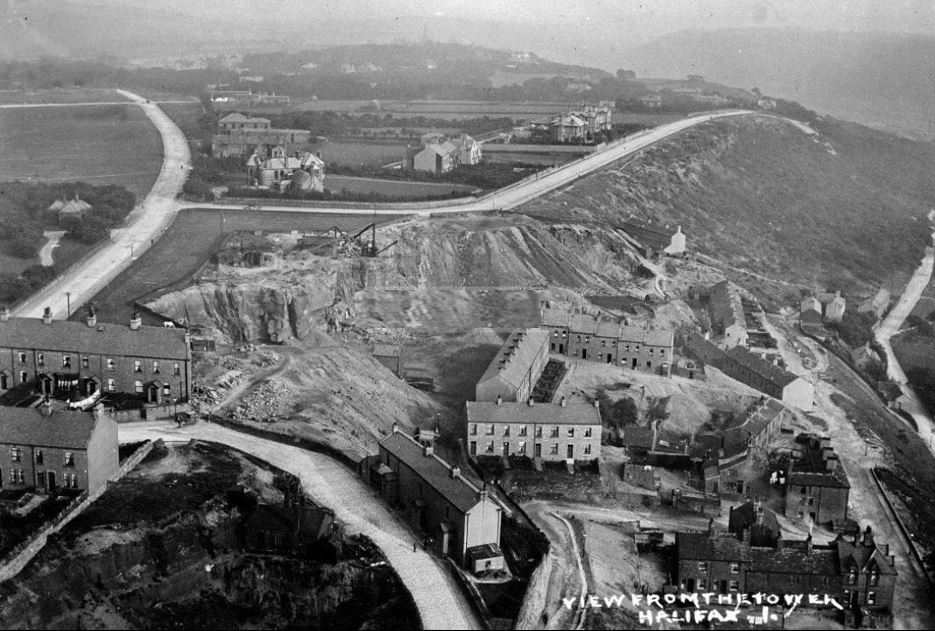
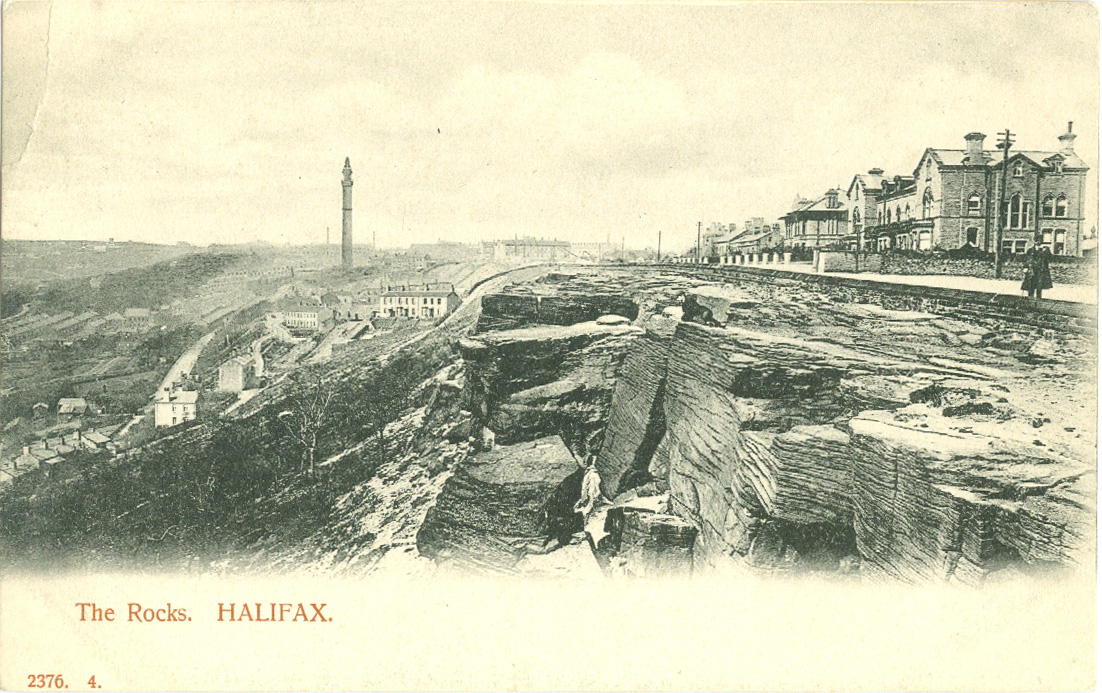
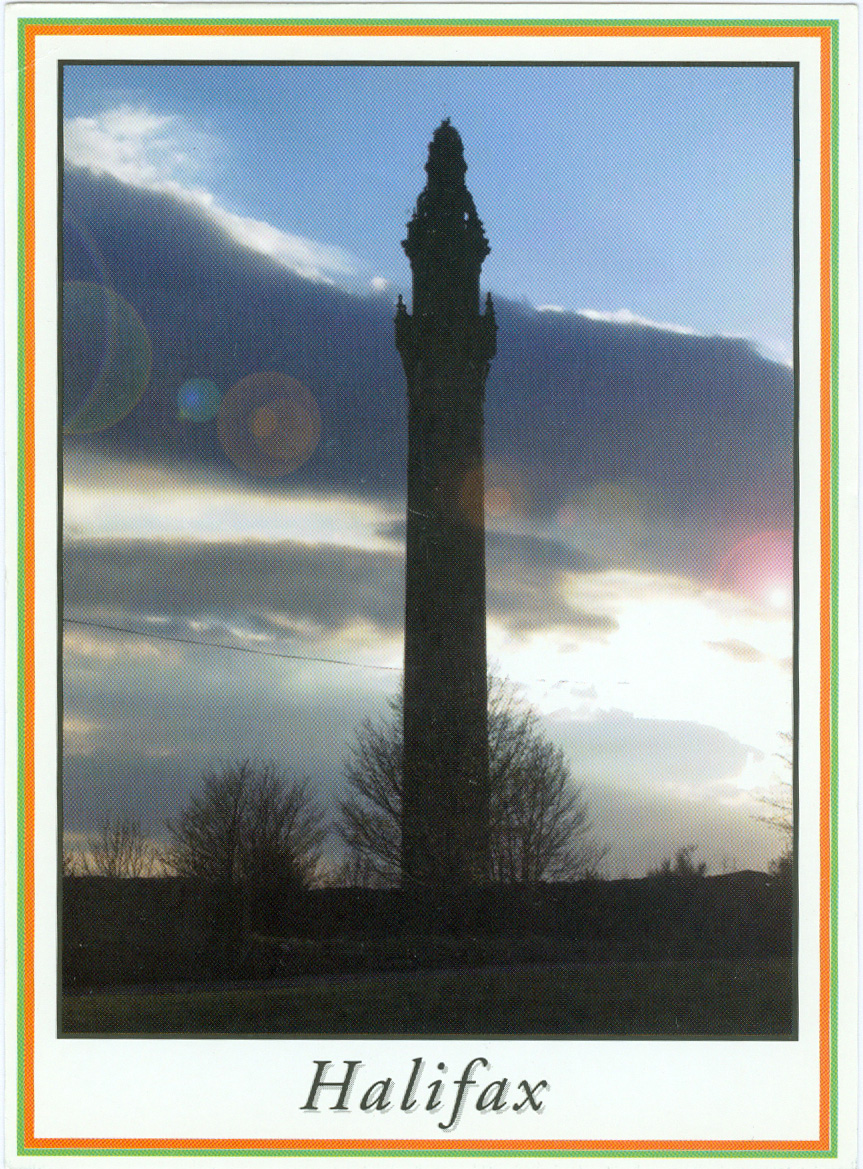
If you have enjoyed your visit to this website, please spread the word by clicking the 'like' and 'share' buttons below. Thank you
